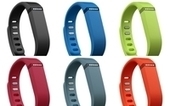Welcome to Part 2 of our latest blog series giving you early access to the upcoming BrainXchange-Hewlett Packard Enterprise white paper, which examines several real-life use cases of wearables at work in different enterprise operations.
In Part 1, we shared an example of how an advanced collaboration platform like HPE’s MyRoom/VRG coupled with wearable technology could revolutionize the automotive recall process for a major auto manufacturer.
Today we will see how a heavy machinery manufacturer could use wearables to provide remote support and on-the-spot training to its partners and customers. The complete white paper will be available for free download on May 18th. Sign up today to receive the white paper directly in your inbox when it goes live.



 Your new post is loading...
Your new post is loading...















Emily Friedman continues her look at wearable technology in heavy machinery applications.